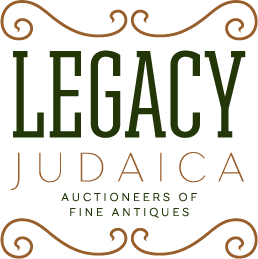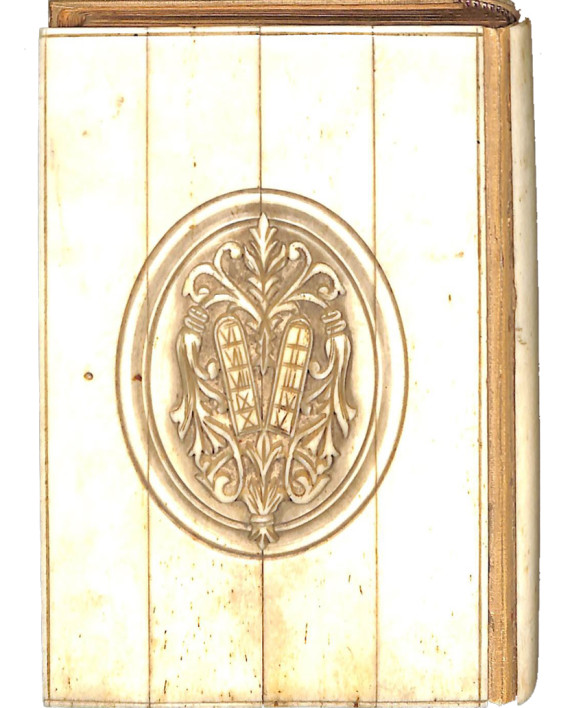SIDDUR WITH IMPRESSIVE BINDING
This siddur seems to have been given as a gift from an inmate to a couple
during the horrendous days of the Holocaust, whilst incarcerated in the
infamous concentration camp/ghetto, Theresienstadt.
The inscription reads, (free translation)
“To remember our common day, at Theresienstadt in the Bohemian region,
And our mutual circumstances of tragedy and sickness,
However also our shared hope in a better future, for us,
Our children and our unhappy nation.
Our eternal G-d will not forsake us,
He should remember us and send us peace, peace, peace,
Ad meah shonim (until 100 years) my dear friend,
Theresienstadt 3/1/43 dedicated to Issac and Chaya Frankel.”
? Theresienstadt concentration camp, also referred to as Theresienstadt
Ghetto, was established by the SS during World War II in the fortress and
garrison city of Terezín (German name), located in what is now the Czech
Republic. Tens of thousands died there, some killed outright and others
dying from malnutrition and disease. More than 150,000 other persons
(including tens of thousands of children) were held there for months or
years, before being sent by rail transports to their deaths at Treblinka and
Auschwitz extermination camps in occupied Poland, as well as to smaller
camps elsewhere. More than 33,000 inmates died as a result of malnutrition,
disease, or the sadistic treatment by their captors. In the fall of 1944, the
Nazis began the liquidation of the ghetto, deporting more prisoners to
Auschwitz and other camps; in one month, they deported 24,000 victims.
Late in the war, after D-Day and the Invasion of Normandy, the Nazis
permitted representatives from the Danish Red Cross and the International
Red Cross to visit Theresienstadt in order to dispel rumors about the
extermination camps. The visit was solely for propaganda purposes and
weeks of preparation preceded the visit. The area was cleaned up, and the
Nazis deported many Jews to Auschwitz to minimize the appearance of
overcrowding in Theresienstadt. With calculated cruelty the Nazis directed
the building of fake shops and cafés to imply that the Jews lived in relative
comfort.
Miraculously surviving the Holocaust this siddur is a true symbol of the
eternal Jewish spirit, of turning to G-d in prayer even in the most distressing
of times. A unique expression of Jewish essence in the darkest days of the
Holocaust.
In excellent condition with a fine decorative binding seemingly of ivory.





Reviews
There are no reviews yet.